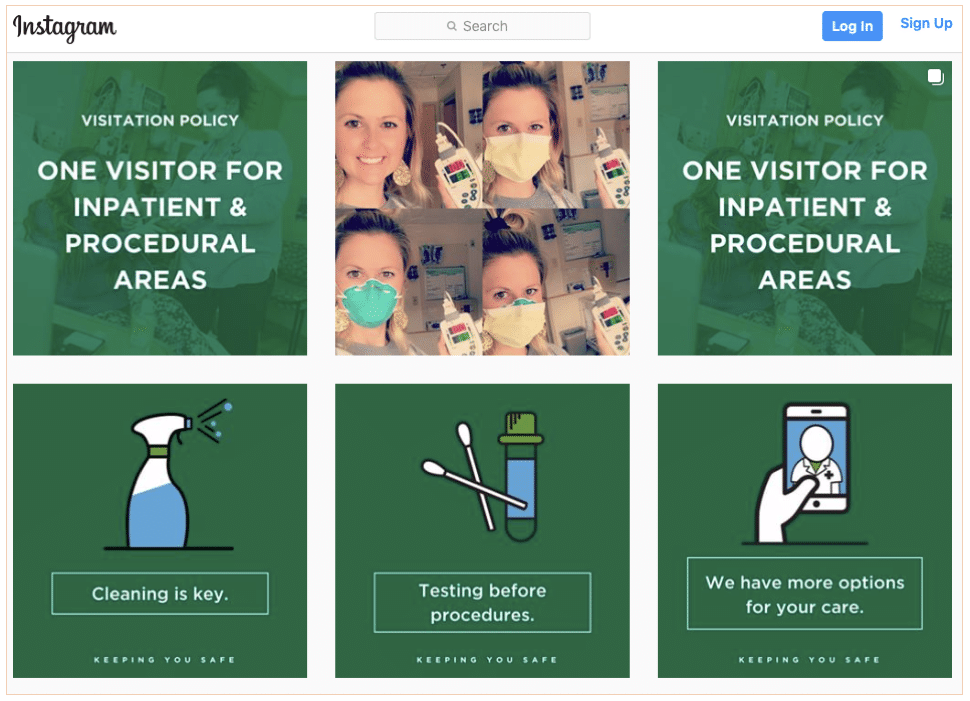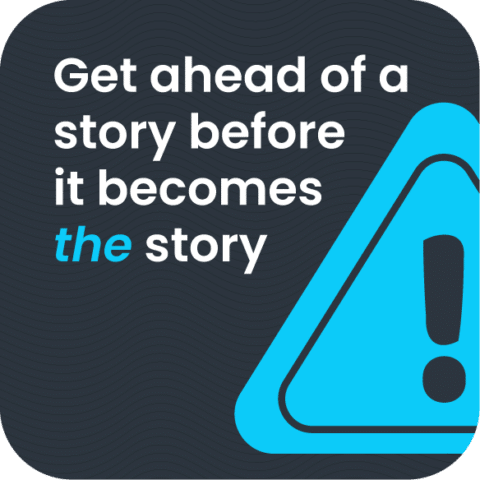It seems like a lifetime ago that we began to read reports of a virus emerging at the end of 2019. As states issued stay-at-home orders, closed businesses, colleges, and schools, and cancelled large-scale events, marketing communication professionals searched for ways to keep people connected and informed, while also recognizing the challenges and losses of the global community.
As we enter summer and restrictions are loosened in some areas for retail, restaurants, and other services, marketing communication (marcomm) professionals play an essential role in keeping customers and employees updated and informed. In a time of uncertainty, both the communication of information and howthat information is communicated can make or break a brand. Couple this urgency with the implications of COVID-19 fatigue, and the marcomm professional has their work cut out for them.
Marketing communication professionals must be ready to adapt, change, and realign messaging to communicate effectively through uncertainty. How is this done in practice? The University of Vermont Medical Center illustrates the value of three tried-and-true approaches that have stood the test of time and should guide effective communications through COVID-19 and beyond:
Be agile and adapt messages quickly
Perhaps the biggest challenge for marcomm professionals in the midst of an ongoing crisis is quickly adapting and changing messaging to address external circumstances.
One of the first actions a marcomm professional must take when there is a crisis of any kind is to pause automated campaigns. This applies to email marketing, advertising, social media posts, and any other communication that has been set up to be automatically published. Time and time again, we have seen brands come across as tone deaf when their automated content keeps rolling out during a crisis. Messages may need to be changed or adjusted even within an hour.
Utilizing messaging and channels to provide information that fosters trust, highlights competency, and continues to add value will reinforce a brand’s information as helpful in the minds of their consumers. Continued relationship building during a crisis sets the foundation for maintaining those relationships after the crisis and beyond.
The University of Vermont Medical Center offers a great example of how a message strategy can evolve through its approach on social media.
In February, prior to COVID-19’s major impact in the U.S., the center’s tweets focused on opioids, its bone clinic, free pancake day, home remedies for the flu, volunteers in Rwanda and snow shoveling safety. It started to incorporate COVID-19 later in the month, eventually sharing a video addressing the virus in March, setting the stage for a change in their communication.
From there, the UVM Medical Center increased the frequency of coronavirus content and information, with an emphasis on being ready, and staying healthy until the majority of the posts focus on the topic by mid-month. It quickly changed its approach in just a few days, updating messaging to include information on access to services, COVID-19 cases and keeping families safe. Tweet volume also picked up and stayed focused on the virus. This same pattern held throughout the month of April, adding positive messages of heroic acts and continuing to evolve with the situation in the months to come.
“The science and recommendations around COVID-19 were changing rapidly, especially early on, which presented a unique challenge for our team,” said Karly Moore, Marketing Specialist, UVM Medical Center. “Our goal was to provide our community with timely and accurate information to inform, as well as influence their behavior in order to slow the spread of the disease. Myself and colleagues attended daily (virtual) meetings with physicians, leaders and other experts from across our organization so we could always be up to date on the latest policies and guidance.”
The center’s approach illustrates the importance of an agile communication strategy where messaging pivots—or changes completely—in the face of a crisis, and adjusts as the situation evolves. The Medical Center leveraged multiple types of messages that included video, shared content from others, informative posts, advice posts, and even thank you posts to keep their Twitter stream active, engaging, and always adding value.
Always add value
During a crisis, marcomm professionals should quickly evaluate their content strategy and pause any messaging that does not add value in the current environment. As the crisis continues to unfold and evolve, this will inform, engage, and keep target audiences coming back.
What does it mean to add value in a crisis? Start with a simple question: “How can we help people today?” Marcomm professionals need to stay focused on adding value and helping their customers with content that informs and reports on the new customer experience.
Restaurants are a great example. During the pandemic, restaurants communicated takeout, curbside pickup, and delivery options, as well as safety measures. Done well, this communication helped their customers and kept businesses going. Now, as restaurants begin to open up again, they must appeal to customers’ appetites, while also creating comfort with their safe, in-restaurant dining experience.
Similarly, hospitals all over the country, like the University of Vermont Medical Center, have updated their messaging. It’s always been about staying healthy and well, but as the pandemic developed, messaging needed to reflect new hospital protocols, when and how to come to the emergency room, and reporting of new cases.
“A team of 20+ marketing & communications professionals from across the UVM Health Network met daily to discuss tactics to ensure that we were aligned across our network,” said Karly Moore. “It was also important for us to coordinate with other Vermont and North Country hospitals to ensure that our practices were aligned so we were delivering a consistent message across our entire region.”
The University of Vermont Medical Center’s messaging evolved to highlight how critical it is to continue healthcare visits, and that it is safe to see medical professionals. The center brought in new “stay healthy” campaigns that emphasize overall healthcare in a way that is engaging, informative, and builds confidence.The center’s Instagram pageoffers a snapshot of how this information fits together.
Information is power—marcomm professionals should always keep this top of mind, in crisis and beyond.
Leverage communication channels strategically, and don’t overwhelm people with too many messages
Every organization, no matter how big or small, reaches its customers through a variety of channels. During a crisis, marcomm professionals must be strategic in their use of these channels, to avoid overwhelming their audiences. It’s not the time to hard sell products and services—the emphasis should be on aligning information sharing across all channels.
The University of Vermont Medical Center carries its focus on informing and providing value across channels, from email to social media. The medical center is also leveraging earned media opportunities to raise awareness of its efforts to support the community through its new president, specifically focused on how he helped to manage the crisis and served as a go-to health expert for Vermont.
As a crisis evolves, this practice must continue. Concerted messages, in different forms and across multiple channels, highlights the importance of a strategic approach to marcomm throughout a crisis.
Staying agile, adding value and leveraging all communication channels are tried and true approaches to marketing communication. In a time of crisis, they are even more important. As marketing communication professionals, we know that external events can impact our communication strategies at any time, and we must be ready. Our content must be useful and engaging across all channels if we are to keep our customers dedicated to our products and services, both through times of challenge and times of smooth sailing.





